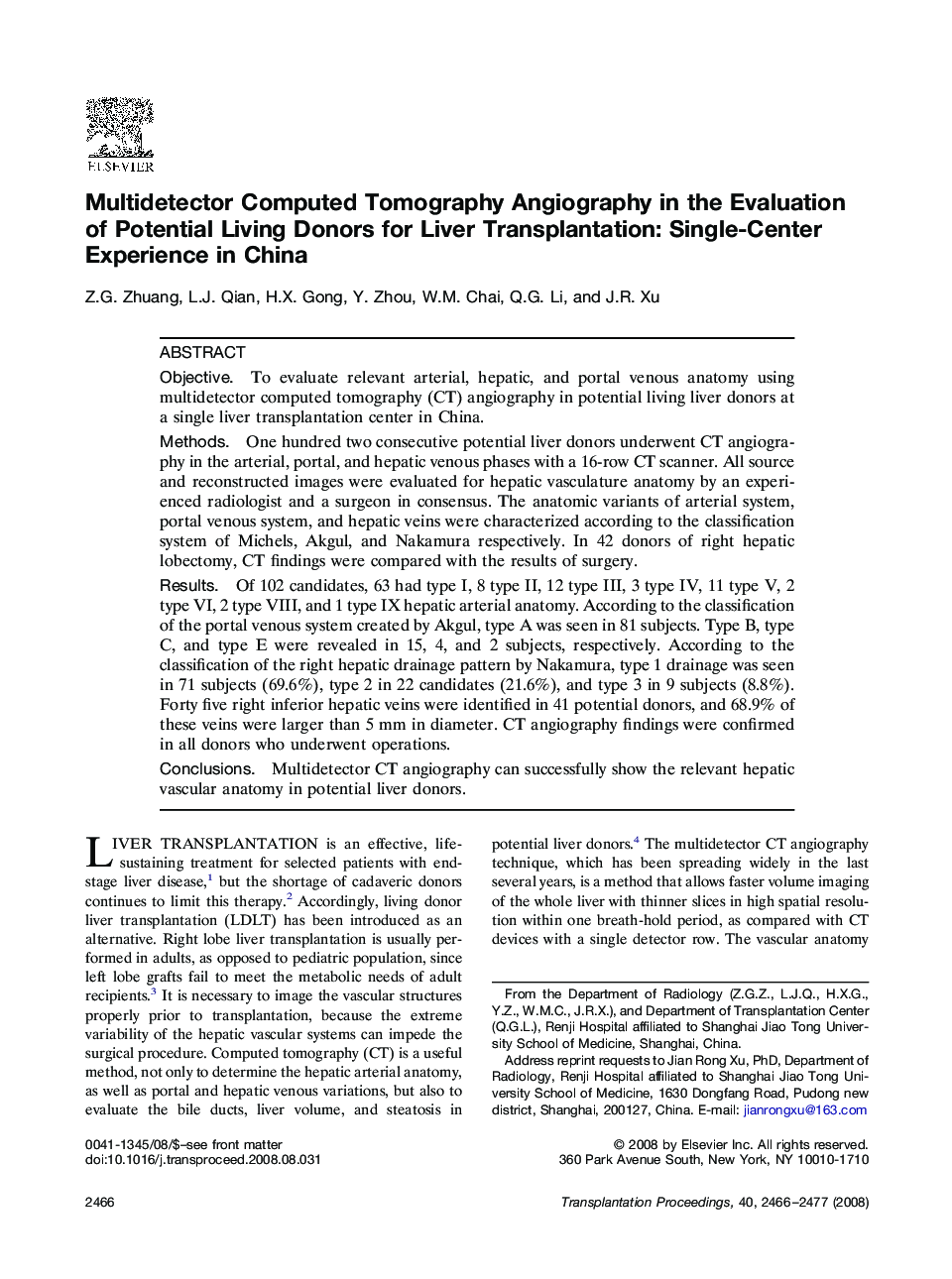| Article ID | Journal | Published Year | Pages | File Type |
|---|---|---|---|---|
| 4261966 | Transplantation Proceedings | 2008 | 12 Pages |
ObjectiveTo evaluate relevant arterial, hepatic, and portal venous anatomy using multidetector computed tomography (CT) angiography in potential living liver donors at a single liver transplantation center in China.MethodsOne hundred two consecutive potential liver donors underwent CT angiography in the arterial, portal, and hepatic venous phases with a 16-row CT scanner. All source and reconstructed images were evaluated for hepatic vasculature anatomy by an experienced radiologist and a surgeon in consensus. The anatomic variants of arterial system, portal venous system, and hepatic veins were characterized according to the classification system of Michels, Akgul, and Nakamura respectively. In 42 donors of right hepatic lobectomy, CT findings were compared with the results of surgery.ResultsOf 102 candidates, 63 had type I, 8 type II, 12 type III, 3 type IV, 11 type V, 2 type VI, 2 type VIII, and 1 type IX hepatic arterial anatomy. According to the classification of the portal venous system created by Akgul, type A was seen in 81 subjects. Type B, type C, and type E were revealed in 15, 4, and 2 subjects, respectively. According to the classification of the right hepatic drainage pattern by Nakamura, type 1 drainage was seen in 71 subjects (69.6%), type 2 in 22 candidates (21.6%), and type 3 in 9 subjects (8.8%). Forty five right inferior hepatic veins were identified in 41 potential donors, and 68.9% of these veins were larger than 5 mm in diameter. CT angiography findings were confirmed in all donors who underwent operations.ConclusionsMultidetector CT angiography can successfully show the relevant hepatic vascular anatomy in potential liver donors.
